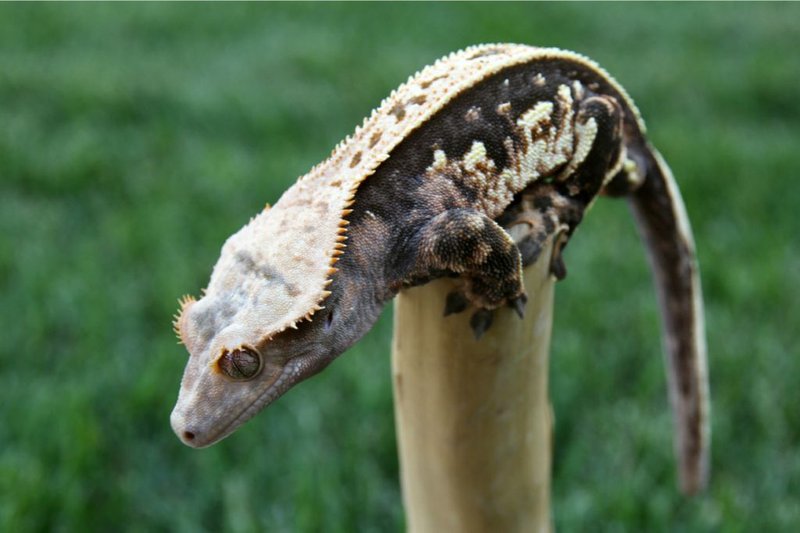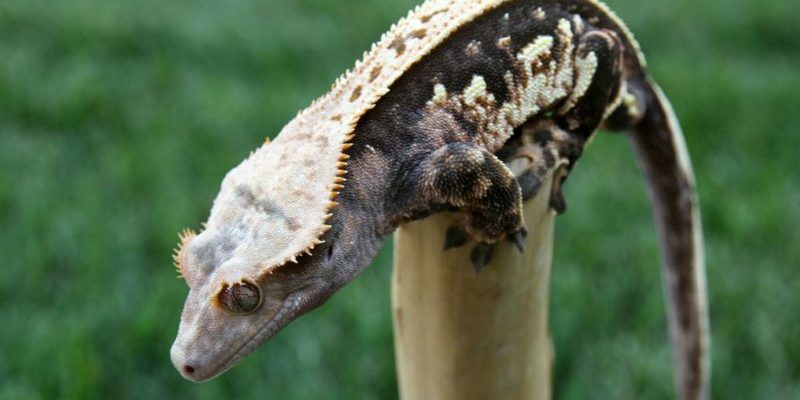
Imagine living in a place where the weather can change quickly, and predators are lurking around every corner. The crested gecko has evolved some fascinating features that help it navigate these challenges. From its incredible camouflage to its ability to drop its tail when threatened, this gecko knows how to handle the wild. Let’s dive into some of the most striking adaptations that make the crested gecko a survivor in its natural world.
Camouflage: Nature’s Best Disguise
One of the crested gecko’s standout features is its ability to blend in with its surroundings. This isn’t just about looking pretty; it’s a matter of life and death. The crested gecko has a skin pattern that mimics the textures and colors of the branches and leaves it lives among. Picture a young gecko clinging to a tree branch, its skin color shifting to match the bark—a perfect hiding spot from hungry birds and other predators.
This ability to camouflage serves another purpose too. It helps the crested gecko ambush its prey. Insects are a primary food source, and if a gecko can stay hidden long enough, it can catch dinner without much effort. Isn’t that clever? By remaining unnoticed, it increases its chances of both avoiding becoming a meal and securing one.
Adhesive Toes: The Secret to Climbing
Have you ever seen a gecko running up a wall? It’s pretty impressive! The crested gecko has specially adapted toe pads that allow it to climb with ease. These pads are covered in tiny hair-like structures called setae, which create a strong grip on various surfaces. Think of it like having thousands of tiny suction cups on its feet.
This unique adaptation means the crested gecko can navigate its arboreal (tree-dwelling) home without a second thought. Whether it’s escaping a predator or searching for food, its climbing ability is essential. You might be wondering how this works in real life. Picture a gecko zipping up a tree trunk to escape danger—thanks to those adhesive toes, it can dart away and find safety.
Tail Autonomy: A Clever Escape Plan
Imagine you’re out in the wild and a predator suddenly pounces. What would you do? The crested gecko has a fascinating survival trick: it can drop its tail. This may sound a bit shocking, but it’s a lifesaver for the gecko. When threatened, the gecko can detach its tail, which continues to wiggle, distracting the predator while it makes its escape.
This adaptation isn’t just about getting away, though. The tail serves a function too—it can later regrow, although it won’t be exactly the same as the original. Still, having this backup plan lets the crested gecko have a fighting chance against threats in its environment. Honestly, it shows just how resourceful nature can be when it comes to survival.
Diet and Feeding: Flexible Eaters
The crested gecko is a bit of a foodie—it’s an omnivore! This means it eats both insects and fruits, which gives it a flexible diet. Being a picky eater can be tough in the wild, but the crested gecko has adapted to take advantage of whatever food is available. Insects are readily consumed, but when fruits are in season, the gecko doesn’t hesitate to enjoy a sweet snack.
This variety in diet helps the crested gecko survive when food might be scarce. For example, if insect populations drop in a dry season, the gecko can switch to munching on fruits and nectar instead. By being adaptable in its eating habits, the crested gecko can thrive no matter what challenges come its way.
Color Change: More Than Just Aesthetic
Another fascinating feature of the crested gecko is its ability to change color. While not as dramatic as a chameleon, the crested gecko can shift tones based on its mood and environment. For instance, it might become darker to absorb heat or lighter to blend in more effectively with its surroundings.
This color change isn’t just for show; it plays a role in thermoregulation—helping the gecko maintain its body temperature. In the warm rainforests of New Caledonia, being able to adapt its color can mean the difference between staying warm and getting too hot. You might think of it like adjusting your jacket based on the weather—smart and practical!
Nighttime Activity: Nocturnal Advantage
The crested gecko is primarily nocturnal, which means it’s most active at night. Being a creature of the dark gives it a few advantages. For one, it can avoid many of the daytime predators that are hunting for food. Plus, it takes advantage of the cooler temperatures at night to move around comfortably.
Being nocturnal also aligns with its feeding habits. Most of the insects and fruit it enjoys are also available at night. Imagine sneaking out at night to grab a midnight snack—this is exactly what the crested gecko does, making the most of the cover of darkness to hunt and explore.
The crested gecko serves as a brilliant example of how nature equips animals with unique adaptations to survive in their environments. From its clever camouflage to its ability to drop its tail, each feature plays a vital role in ensuring this charming little lizard thrives. By being nocturnal and flexible with its diet, the crested gecko showcases the resilience and ingenuity of life.
Next time you see one of these geckos, take a moment to appreciate the remarkable adaptations that help it survive against the odds. Whether it’s climbing trees or changing colors, each adaptation tells a story of survival in the wild, making the crested gecko a true marvel of nature.

